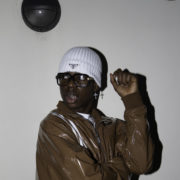The Meaning of “Skrillex” [@Skrillex]
![The Meaning of “Skrillex” [@Skrillex]](https://guap.co.uk/wp-content/uploads/2021/06/skrillex-smokin-Amazon-AWS-2018-rukes-e1623255865327-180x180.jpeg)
Words by: Matthew Griffiths
Skrillex has been a polarising name in music for a while now, especially among dubstep fans.
In early 2021, a video surfaced on YouTube by creator Timbah.On.Toast entitled, “All My Homies Hate Skrillex | A story about what happened with dubstep”. It’s essentially one basshead’s view of how Dubstep’s sound and scene evolved pre-2010. It tells us about one man’s passion for the dark, deep and warm sounds of early Dubstep that preceded Skrillex. It was the kind of thing you listened to on the bus through some big headphones, taking in the vibes of the city at night while commuting home. It confidently reflected the greyness and un-remarkableness of British urban life.
“The early pioneers of Dubstep splintered away from Garage because they were drawn to deeper, darker sounds. The movement that eventually formed would replace the kaleidoscopic escapism of the previous era with a clear, transparent magnifying glass through which the greyness, the moodiness and the alienation of modern Britain were no longer ignored, but revelled in.”
Many more upbeat and crazier sounding sub-genres of Dubstep emerged in the late 2010’s, but Timbah noticed that one particular subgenre was bringing in a lot of new listeners: they called it Dubstep “Tearout” music.
“Tearout tracks were distinguishable for their chaotic energy which they created through hard drums and warping mid-range basslines”.
These basslines were punchier and more aggressive on the ear than the low range basslines of earlier music in the genre. When Tearout Dubstep first got played in clubs, they got a big reaction because of the clear “drop” which people were crazy for. A prime example of a classic Tearout track would be ‘Spongebob’, by Coki.
However, Skrillex’s music was not labelled as Tearout Dubstep – rather, it was labeled as “Brostep”. Interestingly, Timbah, in his documentary, poses an interesting question to his viewers –
“What separates Coki’s beats from the ones that Skrillex makes? Why was Coki’s crazy music embraced by the UK Dubstep scene, while Skrillex’s crazy music was dismissed as Brostep?”
Timbah puts it down to Tearout and Brostep’s structural tendencies, and differing aesthetic – where Tearout’s sound stayed true to the grey murkiness of UK cities, “Brostep tunes strike very bold tones of fluorescent crimson and deepest, darkest black on their way towards a drop.”
But putting Timbah and the UK Dubstep scene’s opinions to one side, what exactly was inspiring Skrillex, a DJ all the way from California, to pursue such a style at the time?
When Sonny Moore “Found” Skrillex
In an interview with Annie Mac on Radio 1’s show Future Sounds, Skrillex (real name Sonny Moore) shared what his journey of making music has been like from his pre-Skrillex days up until now.
“As time goes on you know, it gets harder and harder to impress myself. Not gonna lie, you know, I take longer and longer to put out music and I’ve gone through so many different styles and growths. First time I went to the UK was on tour when I was 17 years old, but I was in a Screamo band”.
It’s possible that those early band tour days in the UK could have been what inspired Sonny to try Dubstep. But what appears to be more evident, is how being a vocalist in a Screamo band seems to have laid a foundation for the wild energy in Skrillex’s early music:
“It was like this – it was like, when I was young, playing in a band, all I wanted to do was get on stage and scream and sing, right? And then after I did that, I didn’t wanna touch a vocal, I didn’t wanna listen to vocals…cause you do it for so long, and you’re young, you wanna do something completely different, right?..and then when I found Skrillex, like – it’s funny cause you look at a lot of, especially the attention I got…people are like, ‘The New EDM Megastar’ and like, to me I’m making…”
Annie: “ You’re making the most bonkers music, like brilliantly bonkers, yeah.”
New Track, ‘Butterflies’
Skrillex’s interview with Annie Mac included 2 plays of his new release, ‘Butterflies’. A collaboration between Skrillex, Four Tet and Starrah, ‘Butterflies’ feels a lot more like a House track than a Dubstep one. The beat is cheerful, not overly dark nor aggressive, and comes across ever so slightly summery. Prior to the drop, the sounds glimmer and flow in and out of the track smoothly like sunlight reflecting off the surface of a holiday resort swimming pool.
So what’s up with the stark difference in sound? How did he get from ‘Bangarang‘ to collaborating with artists like Justin Bieber?
Back around 2012, with there being so much focus on him being a big EDM artist, his success in one genre eventually began pushing him down a different path.
“I fell in love with songwriting again, and fell in love with being in a room of people. The lines are a bit blurred between Electronic music and songs, and I want to continue to explore those lines, push those lines, and just make stuff that no matter what it is – just feels good when you press play, you know?”
Lockdown has boosted the creativity of artists all over the world. It is interesting to see how being kept within one physical space has resulted in individuals breaking through their confinement in a creative way. Skrillex includes himself among those who have done just that and gave a positive meaning to what was once a controversial name within the UK’s Dubstep scene.
“With this whole break, I think people are generally excited, and I think people are less in their boxes now…like I want my music to make people dance, that’s really what Skrillex is all about.”

